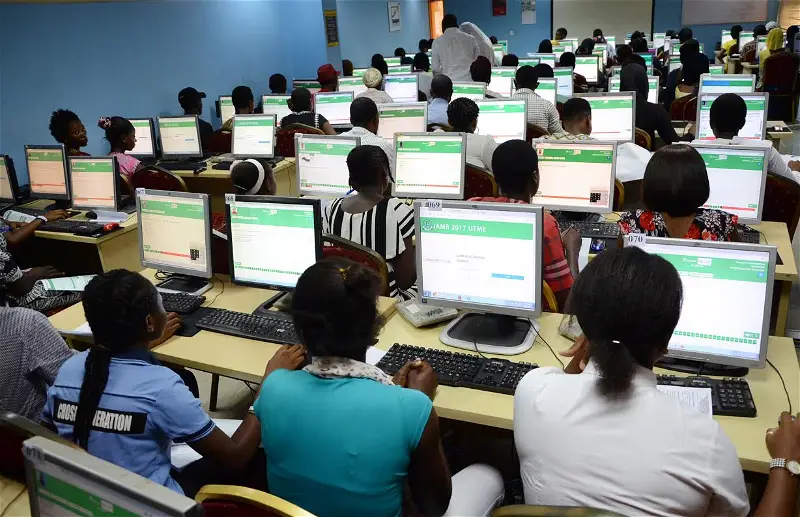
The student loan idea is one that I have been skeptical about since it first surfaced as a proposed policy in President Tinubu’s policy document, ‘Renewed Hope 2023’. In the document, it was stated that if elected, the Tinubu administration “Will institute a pilot student loan regime like the programme established by the Lagos State Government. This will expand access to education to all Nigerians regardless of their backgrounds.”
The document further elaborates that the implementation of the loan regime aims to provide institutions with greater flexibility to be able to adjust their tuition fees to become more cost-reflective, potentially leading to a significant increase in fees.
In fulfillment of this campaign promise, the president has assented to the “Students Loans (Access to Higher Education) Bill, 2023,” which, by implication, repeals the Nigerian Education Bank Act, 2004. The bill, now an Act, seeks “to provide easy access to higher education for indigent Nigerians through interest-free loans from the Nigerian Education Loan Fund established in this Act with a view to providing education for all Nigerians.”
Under the Act, only applicants whose income or that of their family is less than N500,000 will be eligible for the loan. It also mandates that applicants must provide at least two guarantors who shall be civil servants of on at least Grade Level 12 in service, lawyers with at least 10 years post-call experience, judicial officers, or justices of peace.
According to the Act, the loan is open to applicants who must have secured admission to study in federally or state-owned universities, polytechnics, COEs, and any vocational schools.
Repayment becomes due two years after the mandatory National Youth Service, and it shall be done via direct deduction of 10% of the beneficiaries’ monthly salary at source or remittance of 10% of monthly profit in cases of self-employment.
Certain gaps become obvious when the policy is compared with similar policies in other countries (like the United States) and within the country as well, as in the case of the Kaduna State loan scheme, which was particularly referenced in the policy document as a model.
When comparing the loan regime described in the Act and the Federal Direct Subsidized Student Loan, commonly known as the Subsidized Stafford Loan in the United States (which is the closest in similarities), certain parallels can be observed. The Subsidized Stafford Loan is primarily allocated to students with financial hardships, typically those whose family income falls below $50,000.
The maximum loan amount varies depending on the student’s academic year. Under the default repayment plan, known as the Standard Repayment Plan (SRP), borrowers are granted a six-month moratorium before commencing a 10-year repayment period, featuring fixed monthly instalments.
However, alternative repayment plans exist to accommodate individuals with low income and financial challenges. These include income-based, income-contingent, and Pay-As-You-Earn plans, which extend the repayment term to 25 years.
Monthly payments are set at 10 to 15 per cent of discretionary income. The interest rate for such loans is typically determined by the federal government and only begins accruing after a six-month grace period.
Furthermore, provisions are in place to grant deferment, forbearance, or forgiveness in cases of unemployment, with eligibility contingent upon individual circumstances and associated conditions.
In contrast, the student loan scheme in Kaduna State follows a distinct structure. It entails a repayment period of five years without a grace period, an interest rate of 8%, and a Debt Burden Ratio of 33.33%. Only employed students or sponsors, such as parents, are eligible to apply for the loan.
Disbursement of the loan amount occurs subsequent to credit checks conducted by the issuing bank, ensuring confirmation of a consistent income source for the student (in the case of employment) or sponsor (for unemployed students) capable of repaying the loan within five years.
The loan amount accessible to each beneficiary depends on their monthly income. For example, based on the loan calculator available on the application website, an individual with a monthly income of N30,000 qualifies for a loan amount of N490,000, with a monthly repayment obligation of N9,999, equating to 33.33% of their income over a 60-month period (five years).
The scheme mandates that a federal or state civil servant serves as a guarantor.
But unlike these two loan schemes described above, especially that of the US, the Act does not clearly define any alternative repayment method or the implications of the failure to start repayment after the moratorium period of two years after NYSC due to unemployment or other circumstances like loss of a job. This is particularly important and problematic because of the country’s record-high unemployment rate of 33.3%.
Additionally, a misalignment concerning the target beneficiaries of the loan scheme, their realities, and payment prospects become obvious on critical appraisal. This is particularly in contrast to the other schemes referenced above where the target beneficiary realities and payment prospects arguably justify the loan schemes.
For instance, the unemployment rate in the United States is about 3.7 per cent as of May 2023. Only 19.8 per cent of the total unemployed have been jobless for 27 weeks or more. Also, according to Pew Research Center, “only 1.9 per cent of college graduates ages 25 and older were unemployed” in February 2020 just before the COVID-19 outbreak.
The number rose to 6.8 per cent after the pandemic but stabilized in March 2022 at about two per cent. These numbers provide sufficient justification for the 6-month grace period and 10-year repayment period for the Standard Repayment Plan and up to 25 years for income-driven repayment plans.
However, even with these favourable numbers and flexible repayment plans, the scheme adequately provided for cases of unemployment and other situations of financial hardship through loan deferment, forbearance, and even forgiveness.
Still, it is worth noting that out of about 34 million federal direct loans due for repayment, 5.1 million are currently in default, 3.1 million are in deferment, and 24 million are in forbearance, according to Forbes Advisor. Only 0.5 million have been repaid. 6.4 million are in school, while 1.6 million are in the grace period. The level of forbearance is high because repayment has been paused since the start of the COVID-19 pandemic.
A student loan forgiveness plan of the Biden administration is currently being considered and is in the courts due to some controversies.
Similarly, the Act is also in contrast to the Kaduna State scheme where it is clear that the target beneficiaries are only students who are either employed or have sponsors who are willing and able to pay back the loan within five years. This justifies the five-year repayment period, and one can clearly see the alignment between the scheme’s terms and the realities of the target beneficiaries. Compliance with repayment conditions is almost always easily assured.
The federal scheme, however, seeks to target poor households with less than N500,000 in annual family income. Yet, the terms of the loan as provided by the Act require repayment to start two years after the completion of NYSC. In a country with poor employment and graduate survey numbers as described above, the Act does not recognise circumstances of unemployment and other financial hardships which are highly prevalent — a definition of the realities of Nigerian graduates.
By extension and implication, it also does not provide for alternative repayment plans and provisions that address such circumstances as unemployment like loan forbearance, deferment, or forgiveness options.
This stresses the questions of whether the provisions of the Act are consistent with the realities of its target beneficiaries, the country at large and whether it is enough to justify charging more cost-reflective tuition by universities, which is one of the ultimate aims of the Act.
For the Act to be able to usher in an effective loan scheme, the government must resist being cornered by the clutches of ‘Isomorphic Mimicry’, a term used by organisational theorists and policy experts to describe a phenomenon where governments adopt policies and practices that superficially resemble successful models elsewhere without fully understanding or internalizing the contextual factors, specific conditions, structures, and levels of institutional/processual efficiencies of the original contexts of such policies.
A thorough reassessment of the realities of the country and the target demography is advised. This should be followed by a reappraisal of the operational aspect of the provisions of the Act. The government must decisively choose a distinct demography of target beneficiaries. They must choose whether to target prospective beneficiaries who are willing and capable of paying the loan, as in the Kaduna State scheme. This extinguishes the concerns of difficulty and uncertainty regarding compliance with repayment conditions but entirely changes the original aim of the Act, which seeks to cater to ‘indigent’ Nigerian students.
Alternatively, they can maintain the objective of providing easy access to higher education for indigent Nigerians but must explicitly provide for circumstances of unemployment and other financial hardships that define the realities of the original target demography and the country. Provisions for deferment, forbearance, and forgiveness of loan repayment should be made. Such provisions are highly essential and must be included as provisions of the Act (not only the Nigerian Education Loan Fund policy and guidelines) to avoid ambiguity and other legal issues.
Such provisions will definitely affect the viability of the programme as currently designed by the Act if considered, especially in terms of financials and operations. This is where the government must reassess the situation, ask itself whether the scheme justifiably allows for an increment of tuition fees at the moment, and decide whether it is the right timing for such a programme.
Abdulhaleem Ishaq Ringim wrote from Zaria
haleemabdul1999@gmail.com
(Daily Trust)












